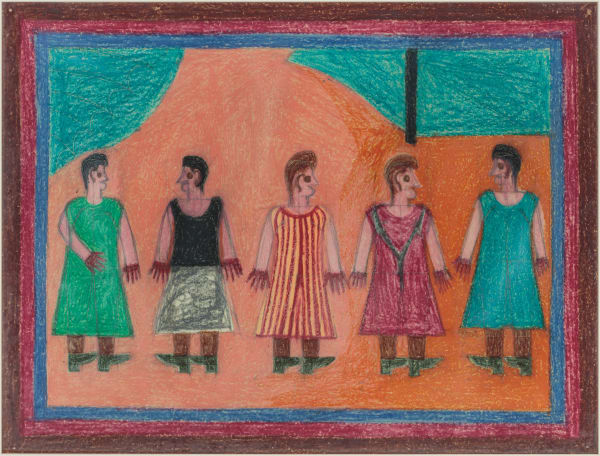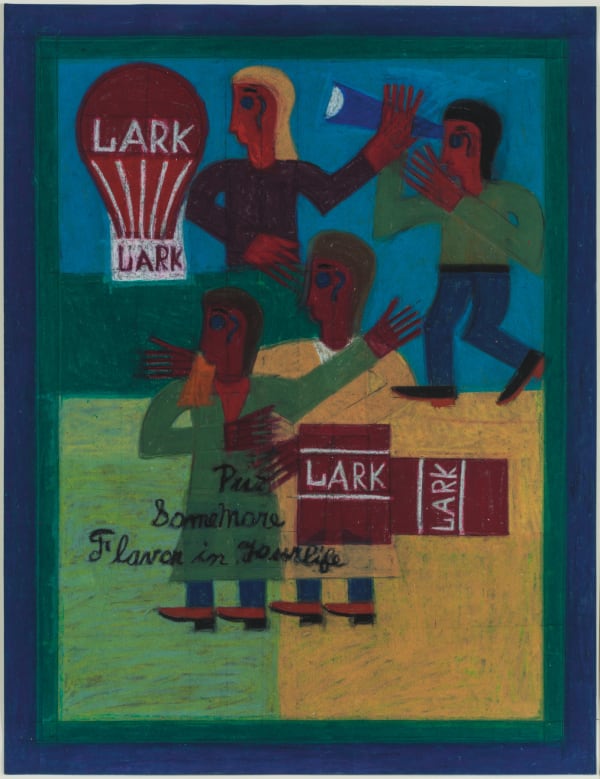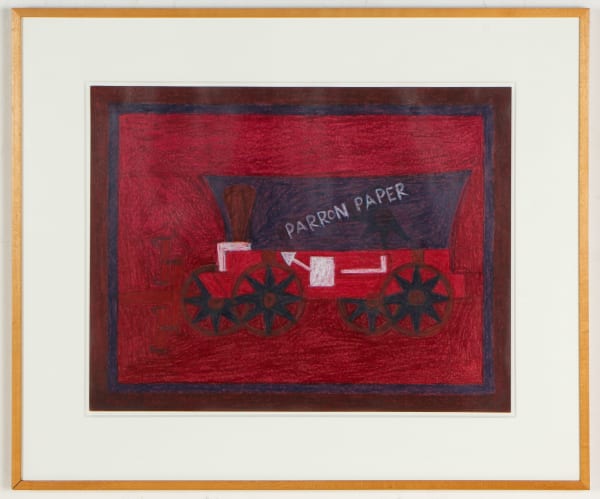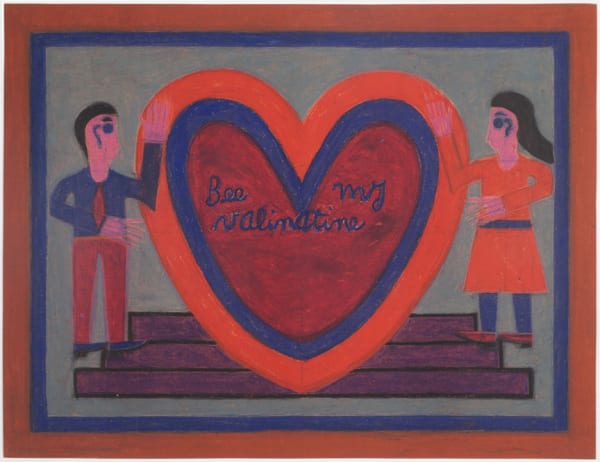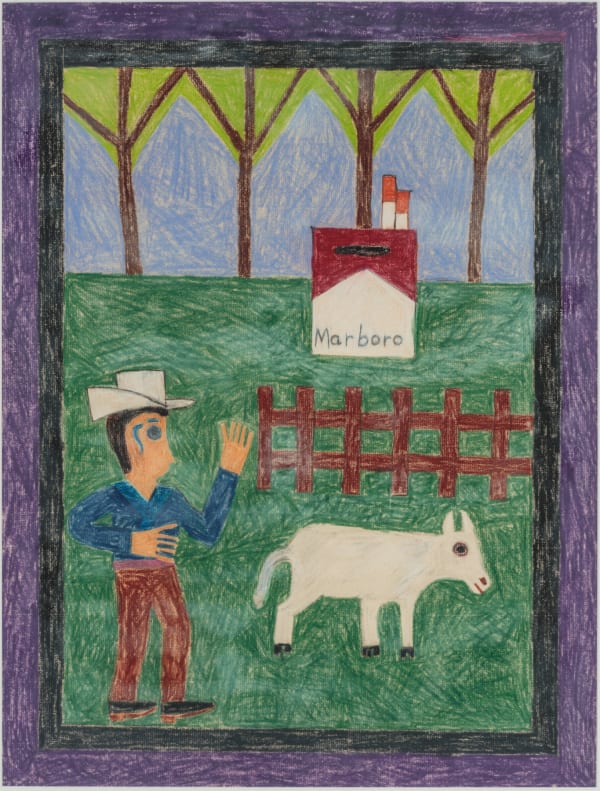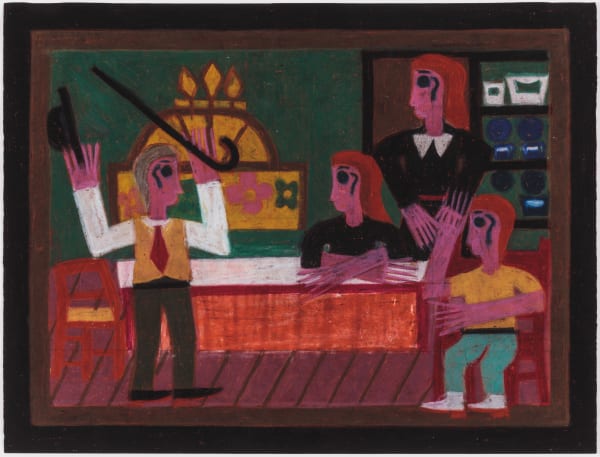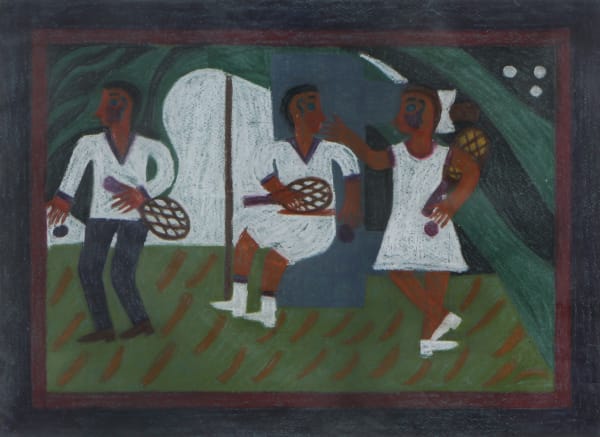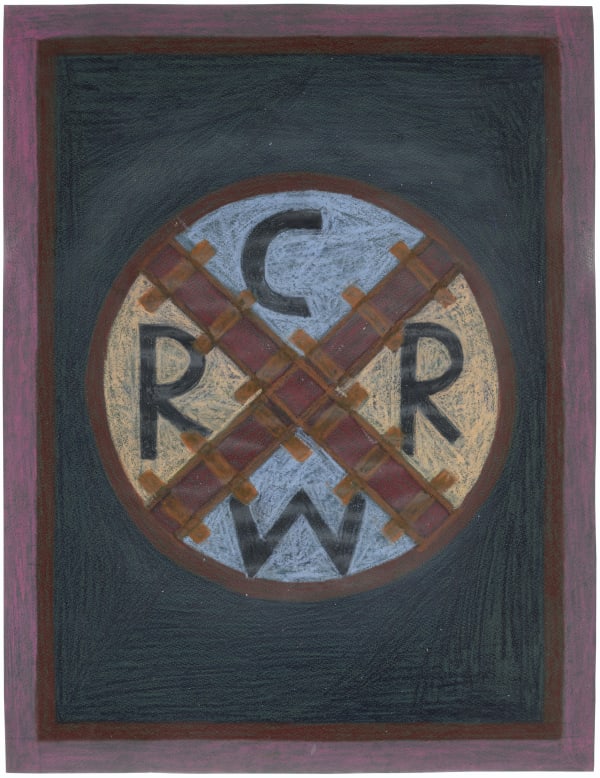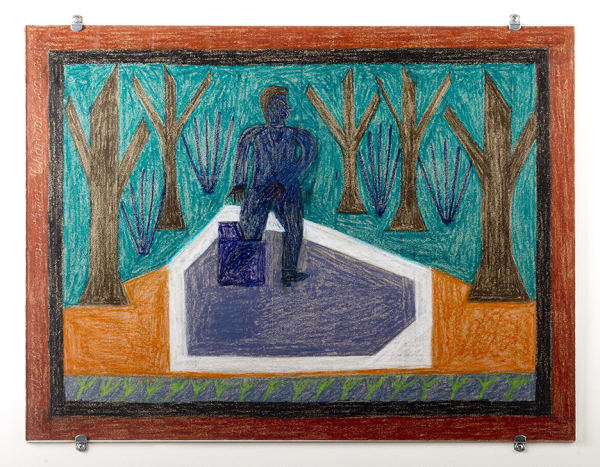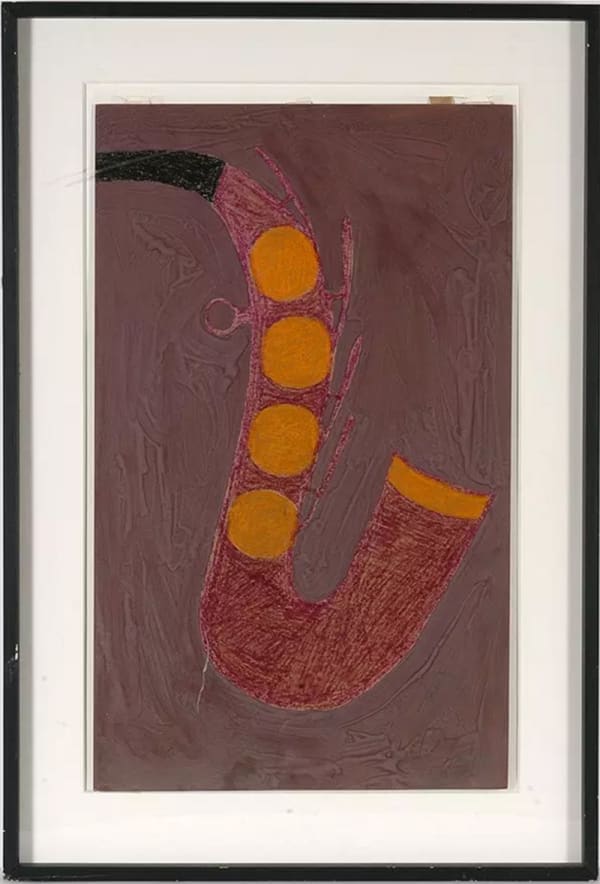Eddie Arning American, 1898-1993
Eddie Arning grew up on his father's farm in Germania, Texas—about 50 miles northwest of Houston. His bouts of depression and anger culminated in an attack against his strict Lutheran mother. He was briefly hospitalized following the incident. After being committed to a mental institution for the second time in 1934, he was diagnosed with so-called dementia praecox (more commonly schizophrenia) and remained in treatment for 30 years.
In 1964, a teacher employed by the hospital offered him wax crayons, paper, and coloring books. Their flat restricted forms seem to have shaped Arning’s visual sensibility, but his ability to master more complex arrangements of figures, colors, and patterns grew rapidly—as did his repertoire of materials and images. Arning's early works appear to have been autobiographical; later works seem to have been inspired by newspaper stories, magazine photos, advertisements, and other material from pop culture. He eventually began to work in oil pastels, which lent a soft, glowing, almost floating quality to his shapes.
Between 1964 and 1974 Arning created more than two thousand works. After this decade of inexhaustible productivity, for refusing to abide by the rules, he was asked to leave the facility in which he resided. He moved in with his widowed sister, but the change permanently disrupted his creative momentum. When his sister could no longer care for him, he moved into a nursing home, where he died at age ninety-five. Arning's work is in the collections of the Museum of Fine Arts in Boston, the Smithsonian American Art Museum, the Milwaukee Art Museum, and the American Folk Art Museum in New York, among others.
-
 Untitled (5 Women in Colorful Dresses), c. 1970
Untitled (5 Women in Colorful Dresses), c. 1970 -
 Untitled (Measurably Long Kool), c. 1970
Untitled (Measurably Long Kool), c. 1970 -
 Lark, put some more flavor in your life, c. 1969
Lark, put some more flavor in your life, c. 1969 -
 PARRON PAPER, c. 1965
PARRON PAPER, c. 1965 -
 Ship with Flag on Green Sea, c. 1965
Ship with Flag on Green Sea, c. 1965 -
 Untitled (Bee My Valentine), c. 1960s
Untitled (Bee My Valentine), c. 1960s -
 Marlboro, c. 1960
Marlboro, c. 1960 -
 Untitled (Family at Table), 1968-70
Untitled (Family at Table), 1968-70 -
 Untitled (Man with 2 Dogs), 1968-70
Untitled (Man with 2 Dogs), 1968-70 -
 Untitled (Woman with Bird), 1968-70
Untitled (Woman with Bird), 1968-70 -
 Three Tennis Players, 1965
Three Tennis Players, 1965 -
 CWRR
CWRR -
 Guitar #259
Guitar #259 -
 Man with Foot in Box
Man with Foot in Box -
 Oboe #302
Oboe #302 -
 Saxophone
Saxophone

